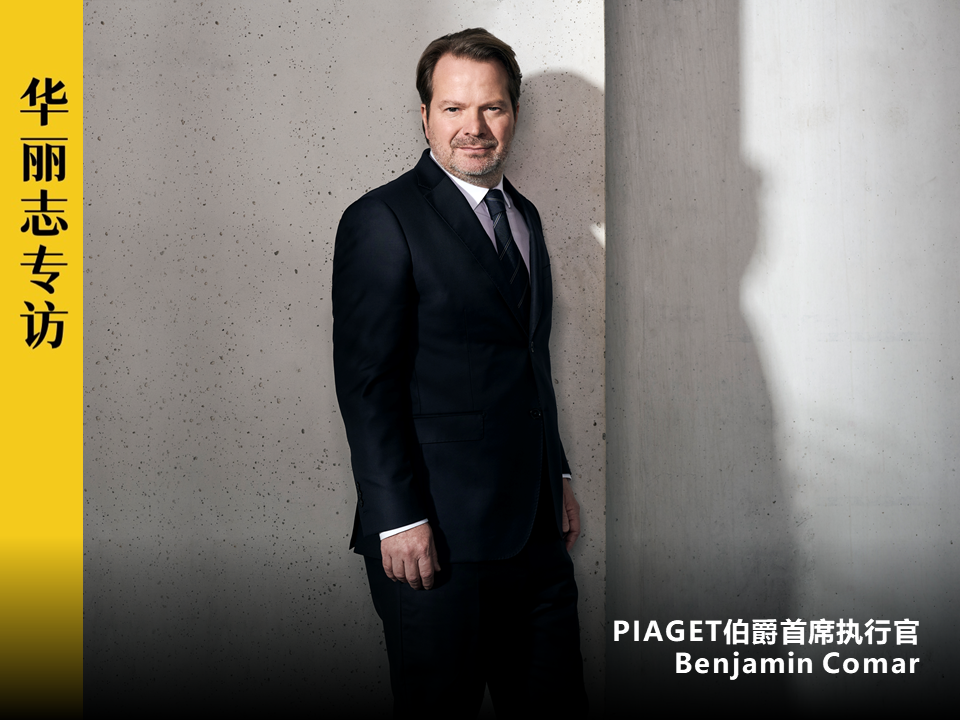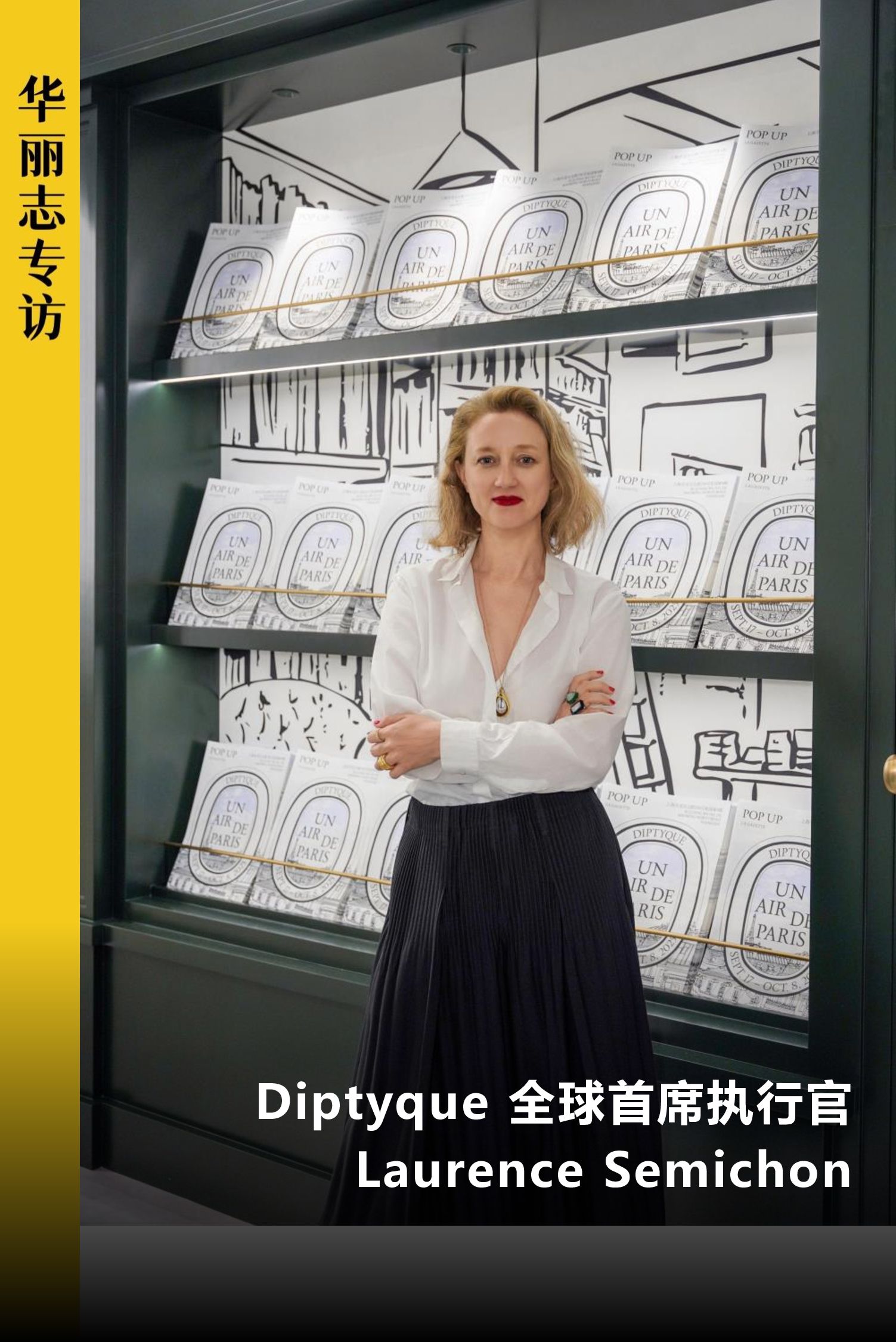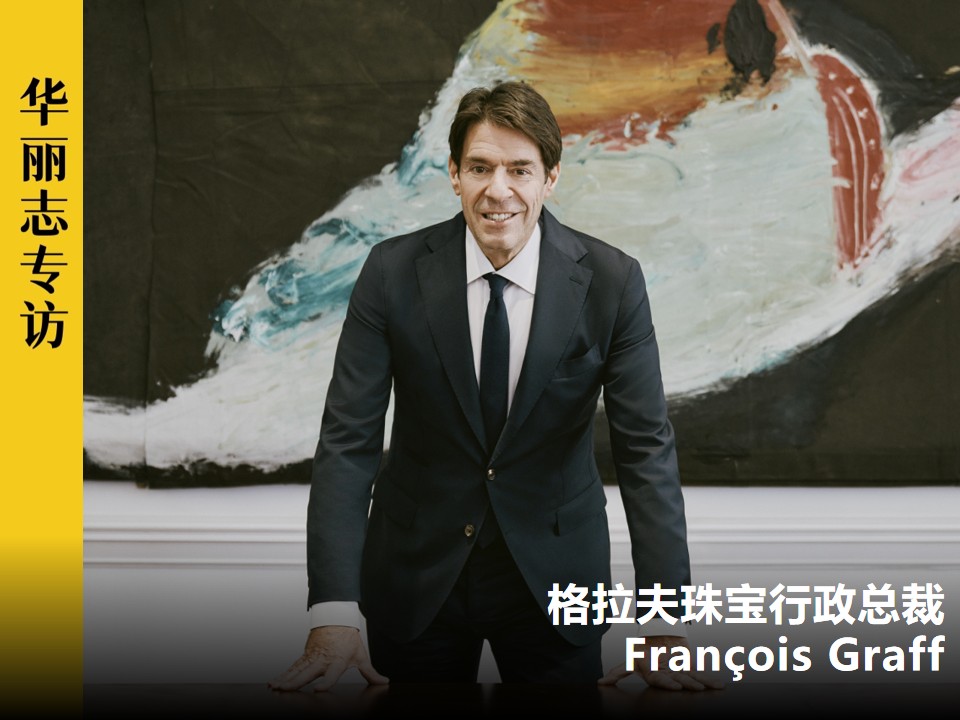French high jewelry Maison Van Cleef & Arpels, a subsidiary of Swiss luxury group Richemont, was founded in 1906 and has a history spanning 116 years. At present, this globally renowned hard luxury brand is making a major commitment to the Chinese Mainland, with its most prestigious global retrospective exhibition—“Van Cleef & Arpels: Time, Nature, Love”—currently on display at the Power Station of Art in Shanghai for more than three months.
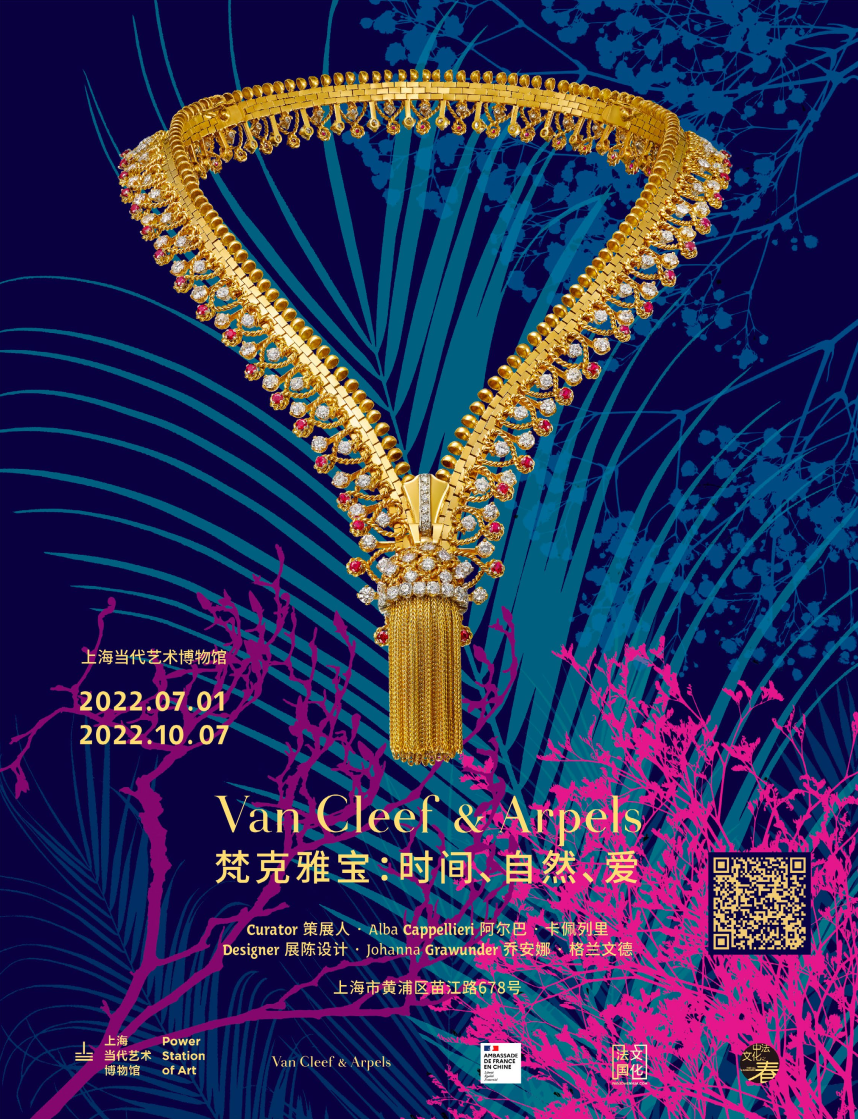
On this occasion, Nicolas Bos, Global President and CEO of Van Cleef & Arpels, granted an exclusive interview to Luxe.CO.
Nicolas Bos has an exceptionally unique career trajectory in the jewelry industry. He first served as Van Cleef & Arpels’ Global Creative Director in 2009 before being appointed Global President and CEO in 2013. In the fashion and luxury industry, creativity and business are often seen as two distinct and even opposing roles. However, Nicolas Bos has successfully bridged both worlds, making him not only the guardian of Van Cleef & Arpels’ century-old jewelry heritage but also the driving force behind its innovation.
During his conversation with Luxe.CO, he spoke about the brand’s history, creative design, and his observations on the digital era and the brand’s strategy in China.
- “Rooted in the brand’s history, continuously seeking ways to reinterpret inspirations for eternity.”
- “Digital tools can never replace the human touch in appreciating physical creations.”
- “Young people in the digital era still have a deep fascination with craftsmanship.”
- “No, we are not considering collaborations with third-party brands.”
- “The vitality of the Chinese market comes from its intrinsic dynamism.”
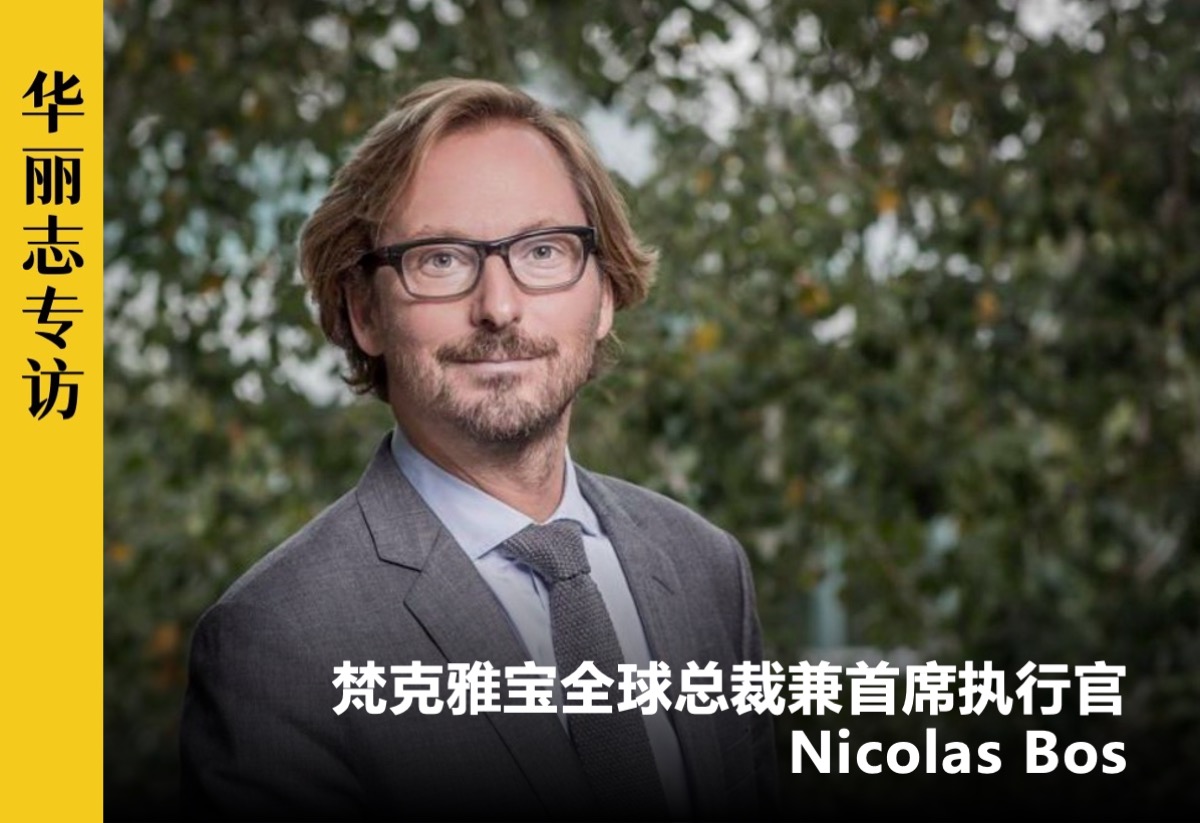
About Nicolas Bos
In 1992, Nicolas Bos joined Richemont, first serving as Assistant Secretary-General at the Cartier Art Foundation. In 2000, he joined Van Cleef & Arpels, taking on the role of International Marketing Director. In 2009, he was promoted to Global Creative Director and Vice President of the brand. By 2010, he also assumed the position of President of Van Cleef & Arpels in the United States. In 2013, he became Global President and CEO of Van Cleef & Arpels. In 2017, Nicolas Bos was appointed a member of Richemont’s Board of Directors and joined the Senior Executive Committee.
“Rooted in the brand’s history, continuously seeking ways to reinterpret inspirations for eternity.”
The curator of this grand exhibition is Alba Cappellieri, a professor in the Jewelry Design Department at Politecnico di Milano and Director of the Jewelry Museum in Vicenza. She has emphasized, “I have studied Van Cleef & Arpels for years to understand how the brand embodies the concept of ‘zeitgeist’ through its precious creations.”
(Note: Since 2014, Alba Cappellieri has served as the director of the Jewelry Museum in Vicenza, the only museum in Italy dedicated to jewelry.)
The theme of time is explored across ten exhibition halls, with the “Abundance” Hall being the curator’s favorite. This section showcases a unique collection of ‘Precious Objects’—a category distinct from Van Cleef & Arpels’ high jewelry collections—including Minaudières, cigarette cases, lighters, and perfume bottles, all of which exhibit exceptional craftsmanship and artistic value.
Since taking on the role of Global Creative Director in 2009, Nicolas Bos has faced a fundamental challenge: How can contemporary high jewelry design maintain a seamless connection to its heritage? This challenge persisted when he became CEO.
“If we disregard our brand history, we lose our soul. Everything must start from history. However, an extensive heritage can also feel overwhelming, as if everything has already been done by predecessors…”
Our conversation with Nicolas Bos began with the “Zip Necklace”, the signature piece featured in the exhibition’s promotional materials.
Luxe.CO: The Zip Necklace is prominently featured in the exhibition’s poster. Why was it chosen to take center stage?
Nicolas Bos: If I had to choose one jewelry piece that represents Van Cleef & Arpels—both for the brand and for myself—the Zip Necklace would be among the most iconic creations. It is also one of Alba Cappellieri’s favorite pieces.
Our collaboration with Alba began about 15 to 20 years ago, and it was the Zip Necklace that first sparked her thoughts on merging timeless classics with contemporary trends. It also marked the beginning of our friendship. In many ways, the Zip Necklace is not just a hallmark of Van Cleef & Arpels but also the inspiration behind this exhibition.
This piece is a complex fusion of elements—on one hand, it showcases extraordinary jewelry craftsmanship (with its transformable nature), yet on the other, it achieves an effortless, natural expression of artistry. These dynamic jewelry pieces are ‘alive’—the wearer can adjust, detach, and reassemble different components to suit their mood, time of day, or occasion. This interactive aspect makes it particularly engaging. For the luxury industry, finding ways to seamlessly blend tradition with contemporary innovation remains crucial.
Luxe.CO: How does Van Cleef & Arpels interpret the relationship between jewelry design and the era in which it exists?
Nicolas Bos: The Zip Necklace embodies the brand’s ongoing dialogue with its time. The essence of maintaining our DNA is not about rigidly adhering to a fixed design style but about continuously incorporating contemporary perspectives. The inspiration comes naturally from everyday objects, from functional items, and from the transformative impact of industrial revolutions on daily life.
In 20th-century European culture, many artists drew inspiration from ordinary objects—things that might seem mundane but were incredibly practical. Our artisans took these everyday inspirations and translated them into rare, intricate, and ingenious jewelry designs.
Necklaces, bracelets, and brooches have been jewelry staples for thousands of years, and they will continue to be so in the future. However, individual creations are more closely tied to the aesthetics of a particular era. The functions of jewelry pieces often correspond with specific trends, allowing people to recall and relive lifestyles of the past that are no longer part of the present.
(Note: In 1929, the Union des Artistes Modernes (UAM) was founded in France, bringing together designers and architects dedicated to creating highly practical, functional, and everyday-use objects. This artistic movement later influenced Van Cleef & Arpels, inspiring its modern creations.)
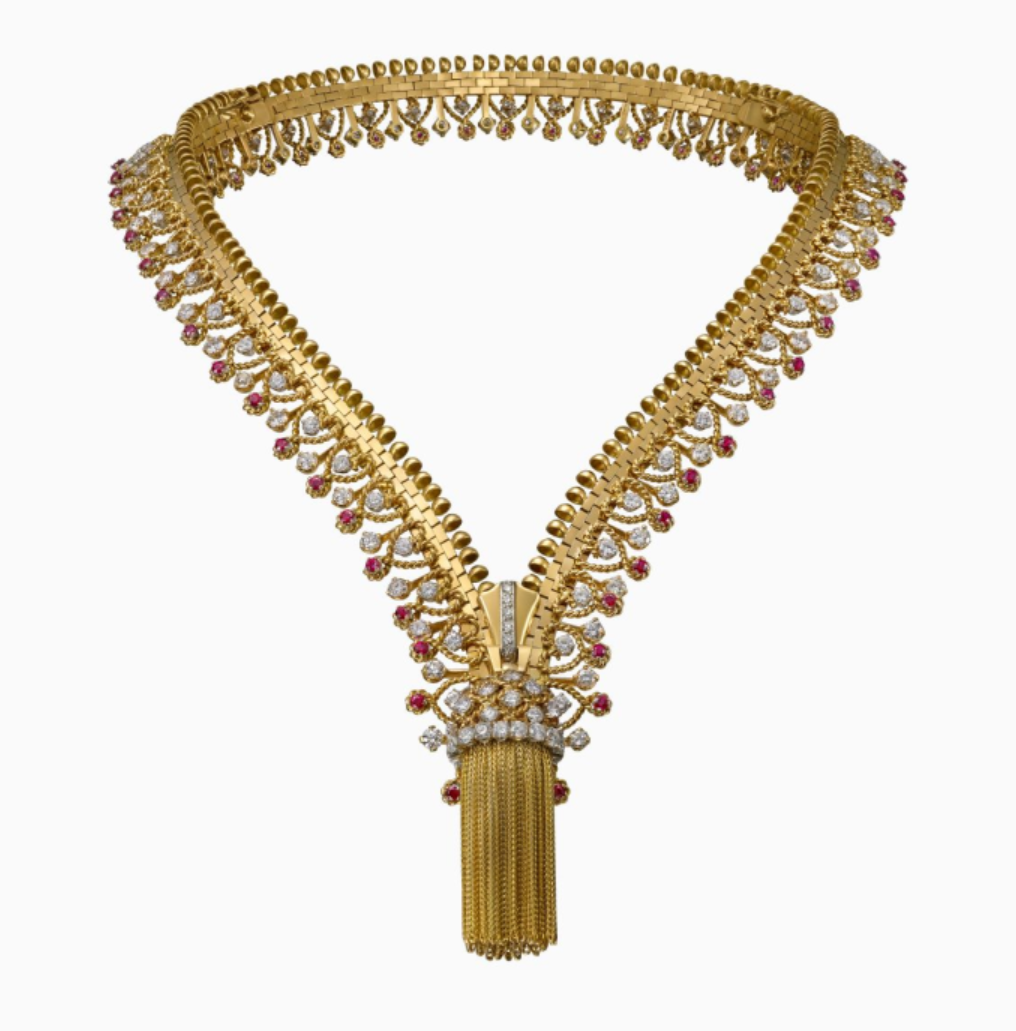
Zip Necklace (1951)
The zipper was originally developed for U.S. military uniforms. The Zip Necklace merges high jewelry craftsmanship with the industrial innovation of the zipper, allowing it to transform from a necklace into a bracelet when zipped up. It is said that the Duchess of Windsor suggested this concept to Renée Puissant, Van Cleef & Arpels’ then-Artistic Director. The final piece was completed in 1950, featuring yellow gold set with dazzling diamonds. When fully zipped, it transforms into a stunning bracelet.
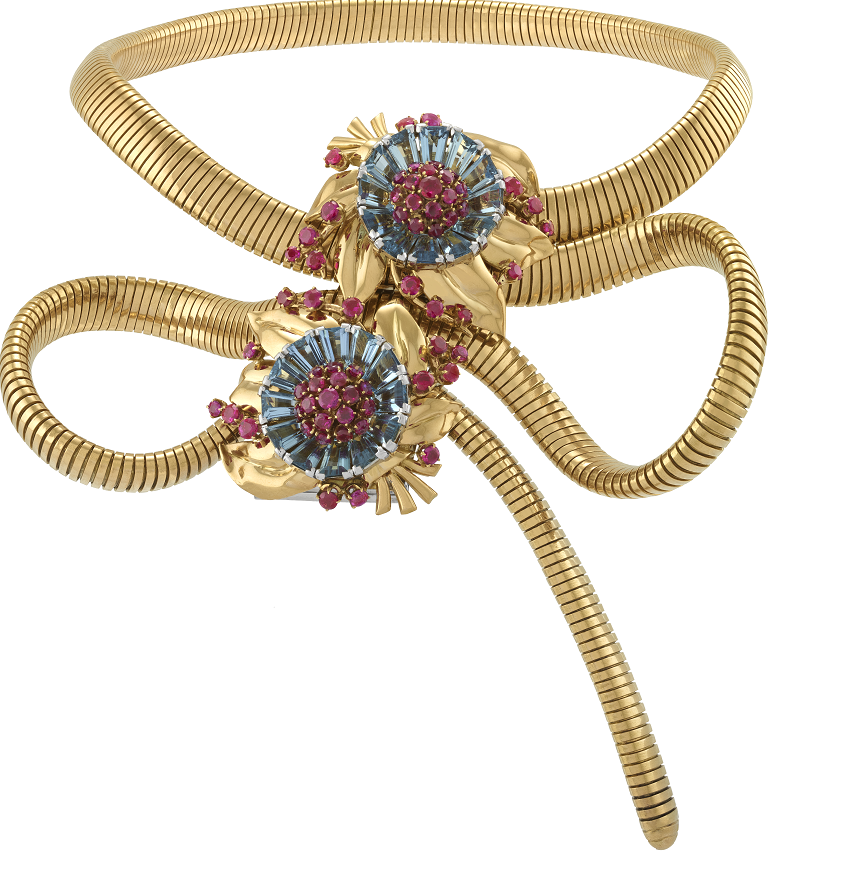
Passe-Partout Necklace (1939)
One of Van Cleef & Arpels’ pioneering transformable jewelry designs, the Passe-Partout Necklace was patented in 1938. This piece features two floral clips with a hidden mechanism, enabling effortless conversion into a short necklace, long necklace, bracelet, or belt. The flower-shaped clips can also be detached and worn separately as brooches, and in some designs, they even function as clip-on earrings.
“Digital Tools Can Never Replace the Human Touch in Appreciating Physical Creations”
In 2019, the exhibition “Van Cleef & Arpels: Time, Nature, Love” made its world debut at Palazzo Reale in Milan, a renowned 17th-century Baroque palace in Italy. Although Shanghai is the second stop of this global exhibition, exhibition designer Johanna Grawunder once remarked:
“In Milan, we had to create an exhibition setting that could engage in dialogue with the opulent decorations and vivid colors of Palazzo Reale’s rooms. Meanwhile, the Power Station of Art (PSA) in Shanghai, with its neutral industrial aesthetic, offered us the opportunity to completely rethink the exhibition layout.”
Van Cleef & Arpels’ Commitment to Bringing Global Exhibitions to the Chinese Mainland
In 2019, Van Cleef & Arpels: Time, Nature, Love made its world debut at Palazzo Reale in Milan, a renowned 17th-century Baroque palace in Italy. Although the Shanghai exhibition marks the second global presentation, exhibition designer Johanna Grawunder noted, “In Milan, we had to create an exhibition setting that could engage in dialogue with the opulent decorations and vivid colors of Palazzo Reale’s rooms. Meanwhile, the Power Station of Art (PSA) in Shanghai, with its neutral industrial aesthetic, offered us the opportunity to completely rethink the exhibition layout.”
Since formally entering the Chinese market in 2010 as a wholly owned subsidiary, Van Cleef & Arpels has been consistently bringing world-class exhibitions to audiences in the region:
- 2012 & 2018: Hosted retrospective exhibitions of heritage collections—“Van Cleef & Arpels: The Art of Beauty” at the Museum of Contemporary Art Shanghai (MOCA) and “Van Cleef & Arpels: When Elegance Meets Art” at Today Art Museum in Beijing.
- 2017 & 2019: Held thematic brooch exhibitions titled “Art of Clip: A Century of Poetry & Brooch Art”, at Chengdu IFS boutique and Nanjing Yihe Mansion.
- Early 2021: Hosted a limited-time watch experience space, “Pont des Amoureux”, at the Shanghai Expo Creative Showroom, featuring watches alongside other jewelry creations.
- Early 2022: Held a high jewelry exhibition spanning the Chinese New Year holiday season, “The Art of Movement: A Century of Fluid Elegance”, with its global debut at the Sea World Culture and Arts Center in Shenzhen.
- March–June 2022: Launched the “Van Cleef & Arpels Spring Garden” limited-time experience space, touring Ningbo, Shenzhen, Wuhan, and Guangzhou.
In January 2022, Van Cleef & Arpels launched its official Douyin (Chinese TikTok) account, which has since garnered 56,000 followers and 111,000 likes. On other Chinese social media platforms, the brand’s Weibo account has 289,000 followers, with the hashtag #VanCleefArpelsExhibition# amassing 6.047 million views. Meanwhile, on Xiaohongshu (Little Red Book), Van Cleef & Arpels has 69,000 followers, with the same hashtag accumulating 574,000 views.
Luxe.CO: Today, what kind of interactive engagement do you think resonates most with the public?
Nicolas Bos: For me personally, exhibitions remain one of the most impactful ways to engage the public.
Jewelry, at its core, is a tangible art form, and the best way to experience it is still to see it up close. Exhibitions provide a structured setting where jewelry pieces are presented within a narrative framework, enriched with extensive historical and contextual information.
Today, we have numerous ways to tell the Maison’s story—through images, videos, and various high-tech digital tools. However, none of these can ever replace the human touch in physically appreciating jewelry. This is precisely why we are so passionate about exhibitions.
During the preparation phase, we conducted research on various brand engagement methods in Shanghai and across the Chinese market. Over the past few decades, the proliferation of museums and the growing number of visitors demonstrate that exhibitions remain one of the most popular experiences—without the need for excessive technological intervention.
Luxe.CO: What challenges do hard luxury brands face when adopting new social platforms or digital technologies?
Nicolas Bos: I believe this issue has two sides. As a brand, in the evolving world of luxury, you must be present wherever consumers are. However, at the same time, there is a risk of diminishing the brand’s prestige if the wrong decisions are made.
With so many communication channels available, one of our greatest challenges is carefully selecting and differentiating the most appropriate platforms—sometimes for commercial exposure, and sometimes for emotional connection.
Luxe.CO: Van Cleef & Arpels recently launched its Douyin account. What was the reasoning behind this decision?
Nicolas Bos: It’s interesting—sometimes we find it frustrating that the content we want to share about the brand is constrained by the limitations of a particular platform (such as layout restrictions).
New social platforms offer fresh opportunities to reach audiences within just a few seconds, providing a quick update on the brand’s latest initiatives. These younger audiences are highly adept at navigating digital spaces; they know how to take a small touchpoint and dig deeper into brand stories and information—such as this Shanghai exhibition. We hope to ignite their curiosity and encourage further exploration in this way.
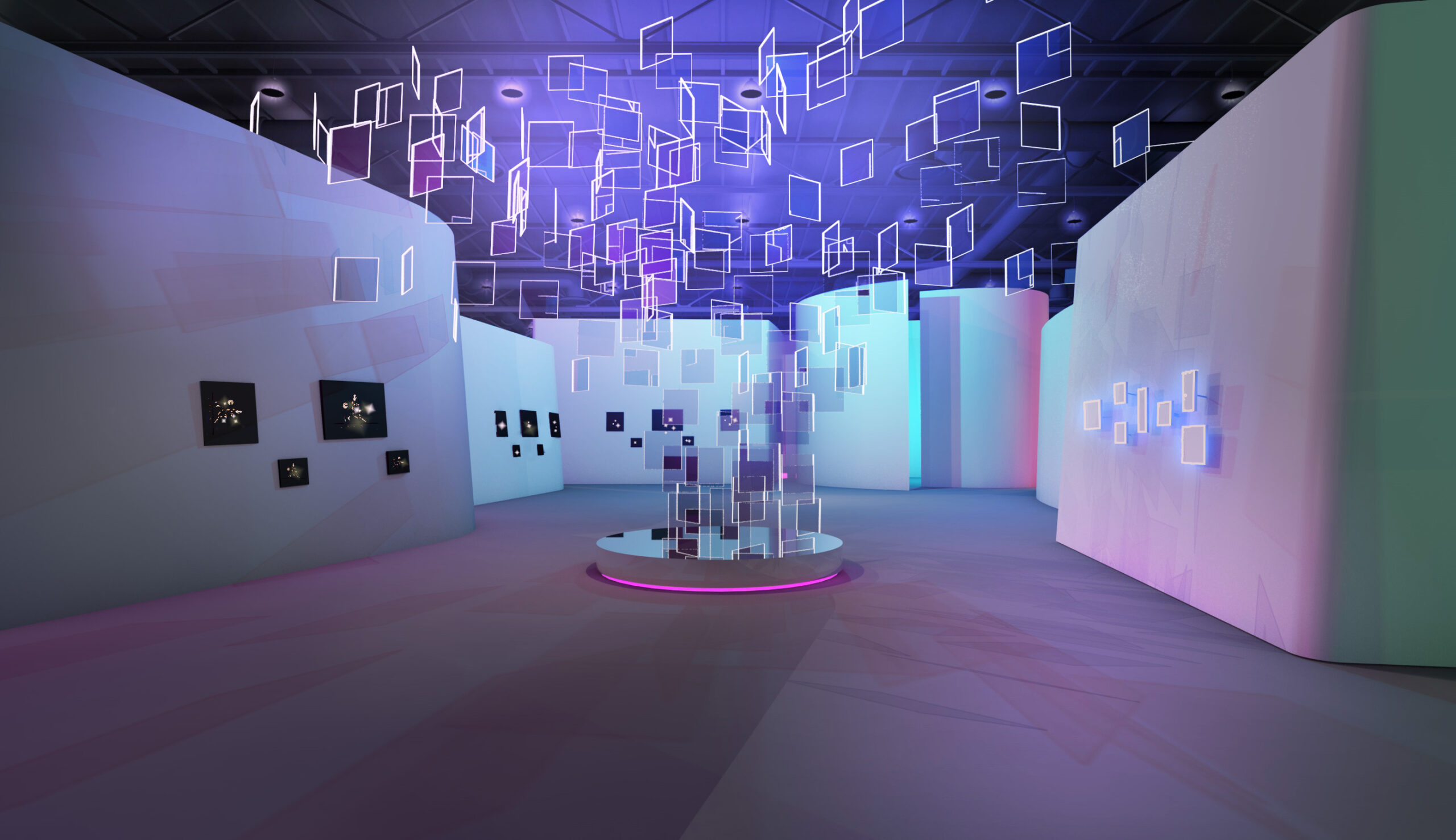
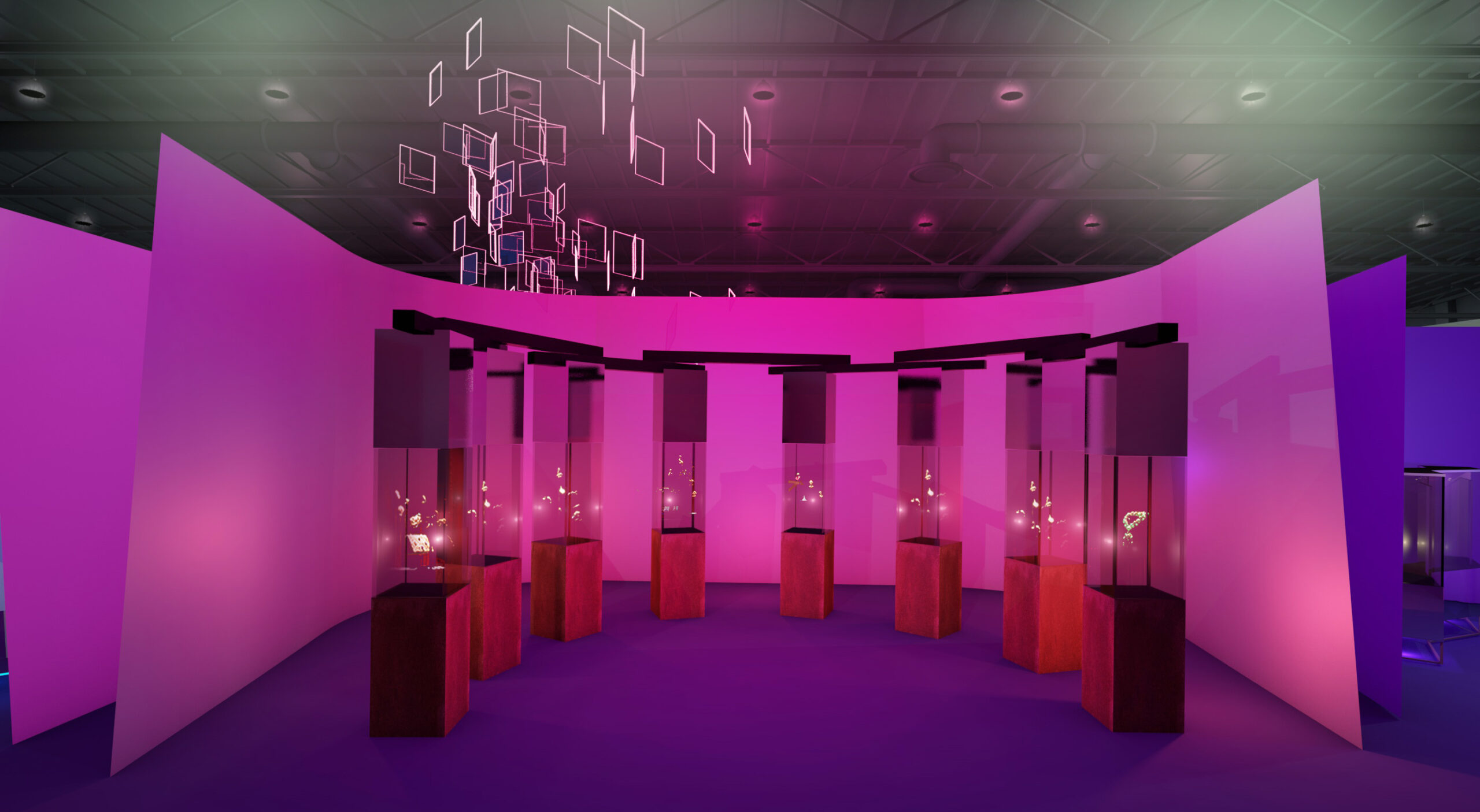
For this Shanghai exhibition, exhibition designer Johanna Grawunder created an art installation that plays with perspective, light, and shadow, interwoven with vibrant colors.

The Power Station of Art (PSA), located on the banks of the Huangpu River in Shanghai, was established in 2012 as the first public contemporary art museum in the Chinese Mainland. Originally the Nanshi Power Plant, the museum’s 165-meter-tall chimney is not only a landmark of Shanghai but also serves as a unique exhibition space.
“Young People in the Digital Era Still Have a Deep Fascination with Craftsmanship”
In 2012, Van Cleef & Arpels supported the establishment of L’ÉCOLE, School of Jewelry Arts in Place Vendôme, Paris—the first educational institution in the jewelry industry dedicated to making jewelry arts accessible to the general public.
In 2022, marking the 10th anniversary of L’ÉCOLE, Van Cleef & Arpels announced the opening of its third permanent center in Shanghai, alongside the launch of its official WeChat account.
Luxe.CO: What insights have you gained in the field of jewelry education over the past decade since L’ÉCOLE was founded?
Nicolas Bos: The world of high jewelry often carries an air of “mystery.” Jewelry pieces displayed in museums and boutiques are rare, expensive, and seem distant from everyday life. People naturally wonder, “You often talk about the exquisite craftsmanship of a jewelry piece, but how can I truly learn and personally experience the differences and characteristics of various gemstones?”
We have observed a growing number of jewelry enthusiasts worldwide who are passionate about exploring the history behind jewelry artistry, experiencing firsthand how a piece is crafted, understanding the techniques involved, and discovering the deep connection between gemstones and nature.
Over the past ten years since the establishment of L’ÉCOLE, we have been pleasantly surprised to see that, despite living in a digital age, young people still have a deep fascination with craftsmanship and a strong desire to create something with their own hands. Many even go on to pursue craftsmanship as their lifelong profession.
We have even introduced hands-on workshops for children. Watching them create their own necklaces and bracelets with their own hands brings us a great sense of joy and nostalgia for childhood creativity.
Luxe.CO: What are the future plans for L’ÉCOLE’s Shanghai campus?
Nicolas Bos: For the Shanghai branch, we plan to collaborate with local institutions on specific projects. One of our key initiatives will be working with university students on joint projects, with a focus on fostering a dialogue between Eastern and Western jewelry craftsmanship and cultural traditions.
(Note: Over the past decade, L’ÉCOLE’s permanent centers in Paris and Hong Kong, along with special courses, lectures, and exhibitions held in cities such as Tokyo, Dubai, New York, and Lyon, have attracted more than 50,000 students from over 50 countries. Additionally, more than 100,000 people have attended 18 exhibitions hosted by L’ÉCOLE worldwide.)
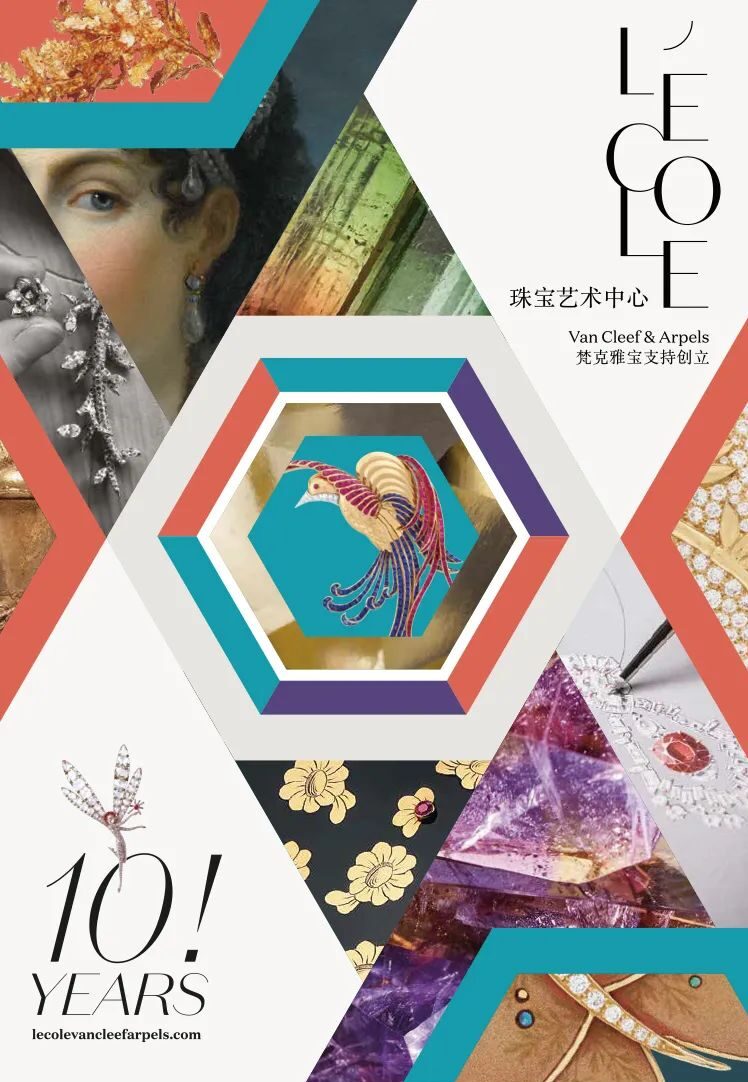
“No, We Are Not Considering Collaborations with Third-Party Brands”
For years, Nicolas Bos has played a leading role in Van Cleef & Arpels’ creative direction, striking a rare balance between creativity and business in the jewelry industry.
Luxe.CO: In a jewelry Maison with such a rich history, how do you balance heritage and innovation?
Nicolas Bos: This is a vast topic, but I believe it mainly comes down to two key aspects: teamwork and our approach to brand history.
This is precisely why we host retrospective exhibitions of our heritage collections. If we ignore our history, the brand loses its soul—everything must begin with history. At the same time, however, a vast legacy can also feel overwhelming, as if every creative idea has already been explored by previous generations. These exquisite past creations can be both inspiring and tempting, leading successors to either replicate classic designs or remain confined within tradition. If you do that, you lose the game.
Luxe.CO: Between heritage and innovation, what role do you personally play within the brand?
Nicolas Bos: Our mission is to stay rooted in the brand’s history while continuously finding ways to reinterpret inspirations in a timeless manner. It’s like this: years ago, our predecessors painted a beautiful flower, and today, we discover another unique and equally beautiful bloom. We then combine the artistic techniques of the past with the colors of this newfound flower, drawing inspiration from a sculpture or a film we recently encountered, ultimately creating an entirely different piece—one that still evokes the unmistakable essence of Van Cleef & Arpels.
My responsibility is to ensure that both our team and jewelry enthusiasts deeply understand the inspiration and craftsmanship behind each creation. This is a continuous effort and must never be taken for granted. We actively seek inspiration from poetry, painting, architecture, and other art forms, using them as a fresh starting point for creativity.
Luxe.CO: Will the brand consider collaborating with more external creative forces in the future?
Nicolas Bos: My answer is “no.”
The most important aspect of brand development remains the continuity and consistency of our internal DNA. We want the brand to grow by enriching its own legacy rather than making fundamental changes through external collaborations.
That being said, we always welcome designers from diverse cultural backgrounds to be part of our creative team. Since its founding, Van Cleef & Arpels has never viewed the world solely through a Western cultural lens. We embrace diversity and collaboration—not necessarily in the form of external partnerships on products, but rather through deep cultural exchange and creative collisions. While maintaining the brand’s clear identity, we strive to enhance cross-disciplinary dialogue and exchange.
“The Vitality of the Chinese Market Comes from Its Intrinsic Dynamism”
With the opening of Van Cleef & Arpels’ new boutique in Qiantan Taikoo Li, Shanghai, in February 2023, the brand now operates a total of 22 boutiques and flagship stores across the Chinese Mainland, including five locations in Shanghai alone.
Since the beginning of 2022, Van Cleef & Arpels has undertaken a series of major initiatives in China. In February 2022, the brand announced the establishment of the L’ÉCOLE, School of Jewelry Arts, Shanghai campus. That same month, it opened a new boutique in Qiantan Taikoo Li, Shanghai, followed by the launch of its largest flagship store in Asia at Chengdu International Finance Square in June 2022. In January 2022, the brand also launched its official Douyin (Chinese TikTok) account.
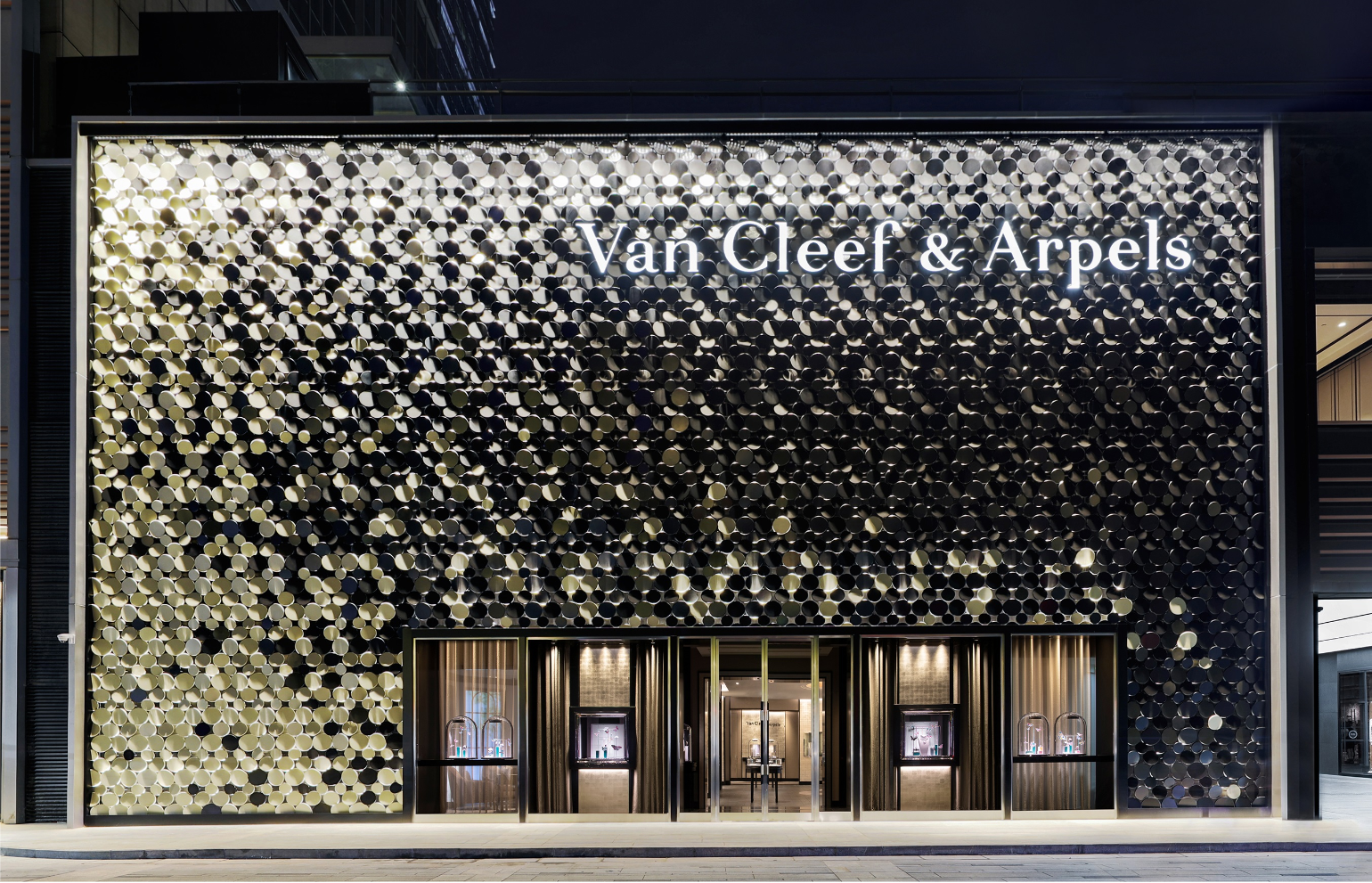
Van Cleef & Arpels’ largest flagship store in Asia, located at Chengdu International Finance Square.
Luxe.CO: In your view, what are the unique characteristics of the Chinese market? What are the brand’s corresponding strategies?
Nicolas Bos: The vitality of the Chinese market comes from its intrinsic dynamism.
Compared to the well-established Western luxury markets, the defining characteristic of China’s rapidly growing market is its diversity. (Van Cleef & Arpels entered China in 2010 through a wholly owned subsidiary model.) Over the past decade, we have cultivated a strong base of “expert-level” collectors while simultaneously welcoming a vast new generation of clients.
However, I believe there are still endless possibilities yet to be explored. For example, collaborations with local museums and art institutions. We are also actively exploring opportunities to engage with local artists and introduce more Chinese artists and their works to Europe and other international markets.
Including our upcoming Shanghai campus, I would describe our future projects in the Chinese market as “comprehensive, diverse, and long-term.”
Luxe.CO: Many hard luxury brands are expanding into travel retail, particularly in Sanya, Hainan. What is your perspective on the future of travel retail for luxury brands in China?
Nicolas Bos: Travel retail has long been an integral part of the luxury industry. For example, Paris has historically been the jewelry trade hub of Europe. When Van Cleef & Arpels opened its first boutique in Place Vendôme in 1906, our primary clientele were foreign merchants from North America, South America, and Russia.
Sanya has recently emerged as a popular luxury shopping destination, supported by government policies, new offshore duty-free regulations, and improved infrastructure. While this is a relatively new phenomenon compared to the long-established tradition of travel retail, I believe that in the future, Chinese tourists will continue to travel globally to shop in various destinations, while also paying attention to emerging hotspots like Sanya.
| Image Credit: Van Cleef & Arpels
| Editor: Elisa

